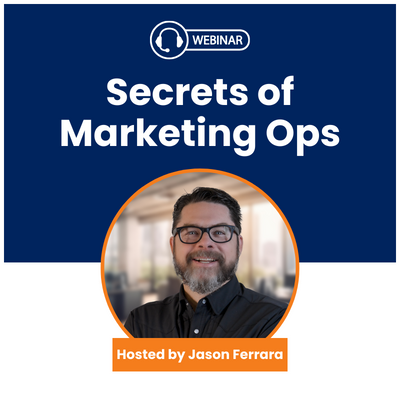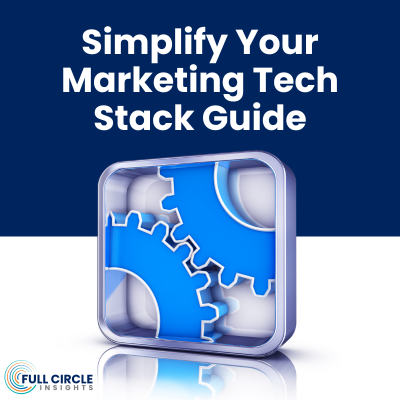When a B2B startup tries to grow revenue, what marketing metrics matter? There are two camps of opinion.
One camp says, “It depends” on the startup’s maturity, sales cycle, industry, and many additional factors.
The other camp says, “Nonsense, it’s all the same! Marketing leaders need to show revenue from every dollar spent.”
ROI is a slippery concept though. It could be dollars earned, but often ROI is influence, awareness, and reputation, which are harder to measure. Moreover, the ROI of a great marketing strategy could be delayed for months if not years.
That’s partially why CMOs now have a median tenure of 31 months. If they can’t show that they generated revenue, they get fired out of a cannon.
No wonder it gets messy when we try to pin down what metrics matter in B2B marketing. Perhaps there’s a middle ground between “It depends” and “It’s all the same.” To find it, I’ll share some real examples from my work as a B2B marketer.
A sure bet in Vegas
In a prior role, I was wrestling with the CFO about our involvement in a large industry trade show. For this event, our marketing department spent about $250,000, a big chunk of our budget.
The CFO asked me, “What do we get of out this?”
Fair question.
At the time, I was a Full Circle Insights customer, so I first showed the CFO how we source revenue. We looked at the pre-work for meetings, demos and visits at the show, and call downs from inside sale reps. Within 90 days, these programs showed $1 million sourced pipeline on our $250K.
However, that trade show also influenced $7 million worth of deals. We were already courting certain customers, and the tradeshow accelerated these conversations.
The two camps would have very different opinions on these stats. The “it depends” crowd might say that influence metrics – those that measure engagement in the elusive middle of the funnel – are crucial because they capture the full $7 million.
The second camp might prioritize the $1 million in revenue because there’s no flimsiness about its origin. You can take that number to a C-level meeting, and no one will bash it.
Why not both?
The split into two camps reflects a central tension in the measurement of marketing contribution. We want to be more scientific. We see our profession becoming increasingly numerical and rigorous. However, we struggle to capture human emotion in our data. The ‘artistic’ side of marketing defies quantification.
I could say that a white paper download and viewed video both equal one engagement. However, that doesn’t tell me which one had more impact or why. Thus, when we ask more of the data than it can tell us, our thought process becomes decidedly unscientific.
The aforementioned CFO, my favorite sparring partner, asked another great question one day. During our quarterly business review, we looked at revenue waterfalls for webinars, trade shows, and other programs. We were examining who showed up and what came out of their participation.
The CFO pointed to the webinars and said, “There’s no pipeline dollars that got sourced by a webinar.”
I asked him, “Have you ever attended a webinar for CFOs and signed a purchase order after?”
“No, of course not!”
Different programs have different goals and effects, I argued. Webinars drive awareness and help us acquire names. That high in the funnel, they convert at a lower rate than other programs.
Why spend money to build awareness? Because we were not Coca-Cola or Nike! People need to know that we exist before we can sell them anything.
Dead and gone
My conversations with the CFO highlight what most marketing leaders accept: vanity metrics are dead and gone.
No one takes us seriously when we brag about how many retweets and likes we got last quarter. Social media and digital channels aren’t enigmas, as they were a short decade ago. Companies want to see hard dollars come out of those black boxes.
So, if you want a seat at a table of C-level executives, play in both camps: it depends and it’s all the same.
When you have incontrovertible evidence that your campaigns made a return, own it. But don’t stop working for awareness, influence, and reputation just because they’re harder to prove. Our buyers don’t just see an ad, click, and buy. We need that ‘soft’ ROI to continue earning hard dollars.
Today, every marketing blog preaches the same digital ‘meta-gospel’: data, data, data; test, test, test. But data doesn’t need a pedestal anymore – it needs a purpose. Data alone isn’t motivating.
What would be motivating is to walk into a CFO’s office with the information to say, “If you give me $1, I can give you $8 back.”
That is one reason I joined Full Circle Insights. Thanks to FCI’s data, I’ve had that conversation many times. It brought me the credibility to talk about influence, awareness, and reputation too.
Let’s find a balance between the soft and hard ROI of marketing work. Let’s stop getting fired out of cannons.
Learn about the four distinct pillars of marketing measurement.




